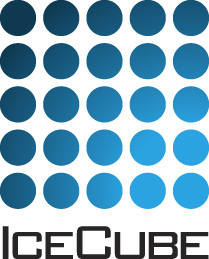Experiments in Neutrinos & Dark Matter
Research
The Maruyama group is exploring several topics in nuclear and particle astrophysics. The experiments range from studying properties of neutrinos to a search for dark matter. We are searching for annual modulation signature from dark matter with the DM-Ice experiment, currently running a 17 kg version at the South Pole, with a 250 kg experiment currently being designed. We are also using the IceCube Neutrino Observatory to study fundamental properties of neutrinos using nearby supernovae. With CUORE, we are looking for a process called neutrinoless double beta decay. If such a process is observed, it would mean that neutrinos are their own antiparticles, and may hold the clue to why we live in a Universe of matter, and not antimatter. The experiment is located in the Gran Sasso National Underground Laboratory in Italy.
Research
The Maruyama group is exploring several topics in nuclear and particle astrophysics.

|
DM-Ice: DM-Ice is searching for dark matter in the southern hemisphere. The goal is to perform a search for dark matter using the time variation resulting from the motion of the detector relative to the dark matter halo as a signature. The project is inspired by the evidence for a positive signal in the DAMA and, more recently, the CoGeNT experiment. The Antarctic ice offers a clean environment to conduct a dark matter experiment, complete with scientific infrastructure provided by the NSF South Pole Station. If confirmed, the observation would revolutionize our understanding of particle physics and cosmology. See also the article on the arXiv for more details. Currently we have 17 kg of NaI detector in operation in the South Pole ice, just below IceCube. We are in the design phase for a 250 kg detector which would be able to do a sensitive test of DAMA. |

|
IceCube Neutrino Observatory:
The IceCube Neutrino Detector is a neutrino telescope that finished construction in February 2011 at the South Pole. IceCube uses deep Antarctic ice instrumented with 5160 photomultiplier tubes (PMTs) at depths between 1,450 and 2,450 meters.
The main goal of the experiment is to detect neutrinos in the high energy range, spanning from 1011 eV to about 1021 eV. Prof. Maruyama's focus is in the low energies. IceCube can also detect 10 MeV neutrinos coming from nearby supernovae, from those, we can study how supernovae explode as well as fundamental properties of neutrinos (theta-13, mass hierarchy, etc.) With the addition of DeepCore, we can study ~100 GeV neutrinos to study atmospheric neutrino oscillation and dark matter collected in the Sun, Earth, and the Galactic Center. |

|
CUORE: stands for "Cryogenic Underground Observabory for Rare Events". Located in the Gran Sasso National Underground Laboratory in Italy, the main goal of the experiment is to look for a process called neutrinoless double beta decay. If such a process is observed, it would mean that neutrinos are their own antiparticles, and may hold the clue to why we live in a Universe of matter, and not antimatter. With CUORE, we can also look for dark matter and annual modulation signals. |
